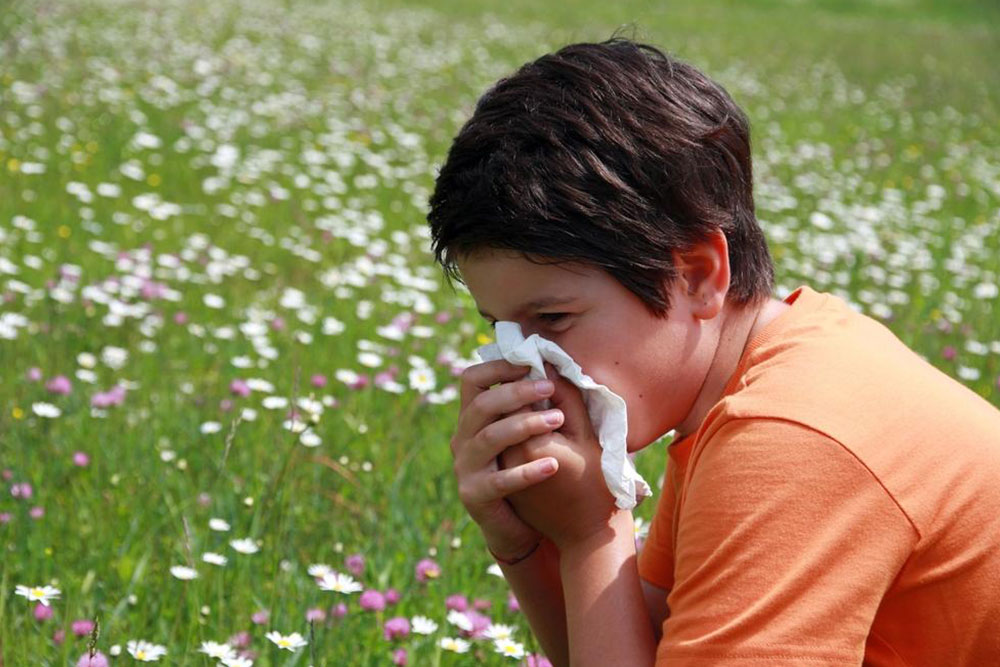Comprehensive Guide to Dog Allergies: Causes, Symptoms, and Effective Management Strategies
This comprehensive guide explores dog allergies, covering causes, symptoms, diagnosis, and management. Learn effective strategies to reduce exposure, diagnose accurately, and manage allergy symptoms, enabling allergy sufferers to enjoy the companionship of dogs without compromising their health. Discover practical tips and medical treatments to improve quality of life while living with pet allergies.

Comprehensive Guide to Dog Allergies: Causes, Symptoms, and Effective Management Strategies
Dogs are among the most beloved pets worldwide, known for their loyalty, companionship, and emotional support. However, for a significant portion of the population, exposure to dogs can trigger allergic reactions, leading to discomfort and health issues. Understanding the underlying causes of dog allergies, recognizing their symptoms early, and employing effective management strategies are crucial for allergy sufferers who wish to enjoy the company of dogs without compromising their health.
Dog allergies are primarily immune responses to specific proteins found in dogs. These allergens do not originate from the fur alone but from other substances associated with dogs. Allergic reactions can vary in severity, from mild discomfort to more serious respiratory issues. Recognizing the symptoms and understanding the causes are vital steps toward managing and potentially alleviating allergy symptoms.
Causes of Dog Allergies
The root causes of dog allergies stem from the immune system mistakenly identifying certain proteins associated with dogs as harmful invaders. When this happens, the immune system triggers an allergic response to combat these perceived threats. Interestingly, shedding fur is rarely the primary allergen; instead, the main culprits include skin flakes, saliva, and urine.
Key allergens involved in dog allergies include:
Dead skin flakes (dander): Tiny skin particles that are shed constantly by dogs, which can linger in the environment for extended periods.
Dog saliva residues: Proteins present in saliva can stick to fur and skin, becoming airborne when dogs lick themselves or other objects.
Dog urine: Although less common, urine particles can contribute to allergenic responses in sensitive individuals.
Contrary to popular belief, shedding fur is generally not the main allergen; instead, it's the particles attached to the fur and skin flakes that cause the bulk of allergic reactions.
Recognizing the Symptoms of Dog Allergies
Spotting the signs of a dog allergy is essential for early intervention and management. Symptoms can manifest within minutes to hours after exposure to a dog or its allergens. Recognizing these signs helps differentiate allergy symptoms from other respiratory or dermatological conditions.
Common symptoms include:
Persistent runny nose and nasal congestion
Frequent sneezing, often multiple times in succession
Facial congestion leading to discomfort and swelling
Itchy, red, and watery eyes
Skin reactions such as hives, rashes, or eczema-like lesions
Chest tightness and difficulty breathing
Chronic coughing and wheezing
Shortness of breath, especially during physical activity or exposure
Symptoms like rashes and hives typically appear shortly after direct contact with a dog or after exposure to contaminated environments.
Diagnosing Dog Allergies
Accurate diagnosis of dog allergies involves a combination of clinical history, skin tests, and blood tests. Skin-prick testing remains the gold standard; it involves introducing a small amount of dog allergen into the skin, usually on the forearm or back, and monitoring for immediate allergic reactions within 15 to 20 minutes. This test helps identify sensitivity levels and clarify whether the symptoms are indeed due to dog allergens.
In some cases, blood tests that measure levels of specific immunoglobulin E (IgE) antibodies against dog proteins are used, especially when skin testing is not feasible due to skin conditions or medications. Both diagnostic methods provide valuable information and guide treatment plans tailored to individual needs.
Effective Management of Dog Allergies
Once diagnosed, managing dog allergies involves a multi-faceted approach that includes medication, environmental control, and behavioral modifications. Consulting with healthcare professionals or allergists is essential to develop an effective treatment plan tailored to the severity of symptoms and lifestyle.
Common treatments and management strategies include:
Antihistamines: These medications block the release of allergy-causing chemicals, alleviating symptoms such as sneezing, runny nose, and itching. They are available in oral tablets, nasal sprays, or eye drops.
Decongestants: Medications that reduce nasal swelling and improve airflow, providing relief during allergy flare-ups.
Nasal steroids: Topical sprays that minimize inflammation in the nasal passages, often serving as a first-line therapy for more persistent symptoms.
Leukotriene receptor antagonists: These may be prescribed to reduce allergic inflammation and provide further symptom control.
Immunotherapy: Allergy shots or tablets designed to desensitize the immune system over time may be recommended for severe cases.
Precautionary Measures for Allergy Sufferers
In addition to medication, taking proactive steps to minimize exposure to dog allergens can significantly reduce symptoms. These measures include behavioral and environmental modifications:
Limit direct contact with dogs—avoid petting, kissing, or close interactions to reduce allergen transfer.
Designate dog-free zones within the home, especially bedrooms, to create allergen-free spaces.
Regularly clean and vacuum living spaces using HEPA filters to capture airborne particles.
Wash hands and change clothes after contact with dogs or visiting places with pets.
Bathtime for your pets, combined with regular grooming outside the home, can help reduce dander levels.
Consider using air purifiers with HEPA filters to improve indoor air quality.
For those who need to visit relatives or friends with dogs, consult healthcare providers about preventive medication or allergy shots.
Understanding dog allergies is crucial for individuals who love animals but want to maintain their health and well-being. With the right diagnosis, several treatment options, and environmental adjustments, it is possible to enjoy the companionship of dogs while managing allergic responses effectively.
By staying vigilant about symptoms and implementing preventive measures, allergy sufferers can lead healthier, more comfortable lives alongside their furry friends.





